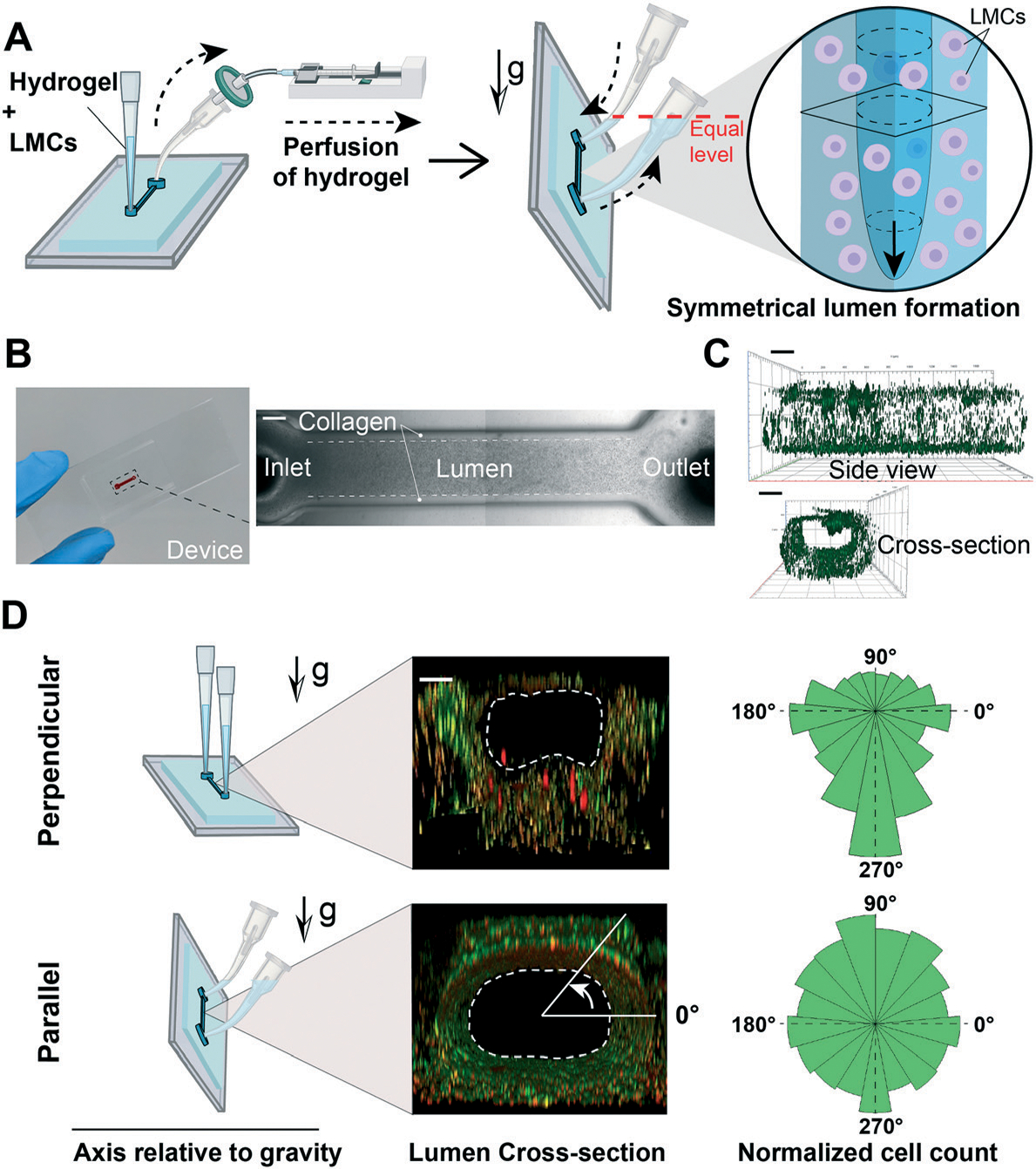Fig. 2.

Gravitational lumen patterning (GLP) technique to fabricate the lymphangion-chip. (A) The LMC–matrix mixture was perfused into the device by producing vacuum using a syringe connected to the outlet. Then, the devices were rotated by 90° (vertical position) so that the microfluidic channel aligned parallel to the direction of gravity. While keeping the device in the vertical position, a curved tip filled with LMC medium was added to the inlet while rotating the outlet tip so that both tips share a horizontal plane (equal level) for the cell medium not to flow out of the device. In this case, the less viscous fluid (cell medium) would wash away the highly viscous fluid (hydrogel) and form a 3D symmetrical lumen. (B) The fabricated device containing the lumen formed by GLP. (C) Side and cross-section views of the 3D lumen (green: fluorescent beads adhered to the collagen surface demonstrating the lumen boundary). (D) Effect of gravity on lumen symmetry when the device axis is perpendicular or parallel to the gravity direction. Scale bars: 200 μm; n = 3 for the experiment.
